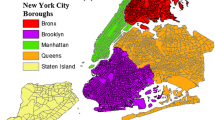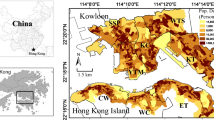Abstract
Demand for leisure activities has increased due to some reasons such as increasing wealth, ageing populations and changing lifestyles, however, the efficiency of public transport system relies on solid demand levels and well-established mobility patterns and, so, providing quality public transportation is extremely expensive in low, variable and unpredictable demand scenarios, as it is the case of non-routine trips. Better prediction estimations about the trip purpose helps to anticipate the transport demand and consequently improve its planning. This paper addresses the contribution in comparing the traditional approach of considering municipality division to study such trips against a proposed approach based on clustering of dense concentration of services in the urban space. In our case, POIs (Points of Interest) collected from social networks (e.g. Foursquare) represent these services. These trips were associated with the territory using two different approaches: ‘municipalities’ and ‘clusters’ and then related with the likelihood of choosing a POI category (Points-of-Interest). The results obtained for both geographical approaches are then compared considering a multinomial model to check for differences in destination choice. The variables of distance travelled, travel time and whether the trip was made on a weekday or a weekend had a significant contribution in the choice of destination using municipalities approach. Using clusters approach, the results are similar but the accuracy is improved and due to more significant results to more categories of destinations, more conclusions can be drawn. These results lead us to believe that a cluster-based analysis using georeferenced data from social media can contribute significantly better than a territorial-based analysis to the study of non-routine mobility. We also contribute to the knowledge of patterns of this type of travel, a type of trips that is still poorly valued and difficult to study. Nevertheless, it would be worth a more extensive analysis, such as analysing more variables or even during a larger period.
Access this chapter
Tax calculation will be finalised at checkout
Purchases are for personal use only
Similar content being viewed by others
Notes
- 1.
https://sensemycity.up.pt/project/sensemyfeup/ (September 2019).
- 2.
https://developer.foursquare.com/ (July 2019).
- 3.
https://www.infoporto.pt/en (July 2019).
- 4.
References
Santos, P.M., et al.: PortoLivingLab: an IoT-based sensing platform for smart cities. IEEE Internet Things J. 5(2), 523–532 (2018)
Grigolon, A.B., Kemperman, A.D.A.M., Timmermans, H.J.P.: Mixed multinomial logit model for out-of-home leisure activity choice. Transp. Res. Rec. J. Transp. Res. Board 2343(1), 10–16 (2013)
Gkiotsalitis, K., Stathopoulos, A.: Joint leisure travel optimization with user-generated data via perceived utility maximization. Transp. Res. Part C Emerg. Technol. 68, 532–548 (2016)
Steed, J.L., Bhat, C.R.: On modeling departure-time choice for home-based social/recreational and shopping trips. Transp. Res. Rec. J. Transp. Res. Board 1706(1), 152–159 (2000)
Tarigan, A.K.M., Kitamura, R.: Week-to-week leisure trip frequency and its variability. Transp. Res. Rec. J. Transp. Res. Board 2135(1), 43–51 (2010)
Sánchez, O., Isabel, M., González, E.M.: Travel patterns, regarding different activities: work, studies, household responsibilities and leisure. Transp. Res. Procedia 3, 119–128 (2014)
Sener, I., Bhat, C., Pendyala, R.: When, where, how long, and with whom are individuals participating in physically active recreational episodes? Transp. Lett. 3(3), 201–217 (2011)
Große, J., Olafsson, A.S., Carstensen, T.A., Fertner, C.: Exploring the role of daily ‘modality styles’ and urban structure in holidays and longer weekend trips: Travel behaviour of urban and peri-urban residents in Greater Copenhagen. J. Transp. Geogr. 69, 138–149 (2018)
Calabrese, F., Diao, M., Di Lorenzo, G., Ferreira, J., Ratti, C.: Understanding individual mobility patterns from urban sensing data: a mobile phone trace example. Transp. Res. Part C Emerg. Technol. 26, 301–313 (2013)
Anda, C., Erath, A., Fourie, P.J.: Transport modelling in the age of big data. Int. J. Urban Sci. 21(Suppl. 1), 19–42 (2017)
Thomas, T., Geurs, K.T., Koolwaaij, J., Bijlsma, M.: Automatic trip detection with the Dutch mobile mobility panel: towards reliable multiple-week trip registration for large samples. J. Urban Technol. 25(2), 143–161 (2018)
Sun, Y.: Investigating ‘Locality’ of intra-urban spatial interactions in New York City using foursquare data. ISPRS Int. J. Geo-Inf. 5(4), 43 (2016)
Huang, A., Gallegos, L., Lerman, K.: Travel analytics: understanding how destination choice and business clusters are connected based on social media data. Transp. Res. Part C Emerg. Technol. 77, 245–256 (2017)
Zhou, Y., Lau, B.P.L., Yuen, C., Tuncer, B., Wilhelm, E.: Understanding urban human mobility through crowdsensed data. IEEE Commun. Mag. 56(11), 52–59 (2018)
Zhang, J., Guo, B., Chen, H., Yu, Z., Tian, J., Chin, A.: Public sense: refined urban sensing and public facility management with crowdsourced data. In: 2015 IEEE 12th Intl Conf on Ubiquitous Intelligence and Computing and 2015 IEEE 12th International Conference on Autonomic and Trusted Computing and 2015 IEEE 15th International Conference on Scalable Computing and Communications and Its Associated Workshops (UIC-ATC-ScalCom), pp. 1407–1412 (2015)
Quadri, C., Zignani, M., Gaito, S., Rossi, G.P.: On non-routine places in urban human mobility. In: 2018 IEEE 5th International Conference on Data Science and Advanced Analytics (DSAA), pp. 584–593 (2018)
Sumudu Hasala, M., et al.: Identifying points of interest for elderly in Singapore through mobile crowdsensing. In: Proceedings of the 6th International Conference on Smart Cities and Green ICT Systems, pp. 60–66 (2017)
Gan, Z., Yang, M., Feng, T., Timmermans, H.: Understanding urban mobility patterns from a spatiotemporal perspective: daily ridership profiles of metro stations. Transportation (AMST) 1–22 (2018)
Czepkiewicz, M., Heinonen, J., Ottelin, J.: Why do urbanites travel more than do others? A review of associations between urban form and long-distance leisure travel. Environ. Res. Lett. 13(7), 073001 (2018)
Rodrigues, J.G.P., Pereira, J.P., Aguiar, A.: Impact of crowdsourced data quality on travel pattern estimation. In: Proceedings of the First ACM Workshop on Mobile Crowdsensing Systems and Applications - CrowdSenSys 2017, pp. 38–43 (2017)
Rodrigues, J.G.P., Aguiar, A., Queiros, C.: Opportunistic mobile crowdsensing for gathering mobility information: lessons learned. In: 2016 IEEE 19th International Conference on Intelligent Transportation Systems (ITSC), pp. 1654–1660 (2016)
Rendón, E., Abundez, I., Arizmendi, A., Quiroz, E.M.: Internal versus External cluster validation indexes. Int. J. 5(1), 27–34 (2011)
Author information
Authors and Affiliations
Corresponding author
Editor information
Editors and Affiliations
Rights and permissions
Copyright information
© 2019 Springer Nature Switzerland AG
About this paper
Cite this paper
Cunha, I., Simões, J., Alves, A., Gomes, R., Ribeiro, A. (2019). Characterization of Individual Mobility for Non-routine Scenarios from Crowd Sensing and Clustered Data. In: Chatzigiannakis, I., De Ruyter, B., Mavrommati, I. (eds) Ambient Intelligence. AmI 2019. Lecture Notes in Computer Science(), vol 11912. Springer, Cham. https://doi.org/10.1007/978-3-030-34255-5_20
Download citation
DOI: https://doi.org/10.1007/978-3-030-34255-5_20
Published:
Publisher Name: Springer, Cham
Print ISBN: 978-3-030-34254-8
Online ISBN: 978-3-030-34255-5
eBook Packages: Computer ScienceComputer Science (R0)





